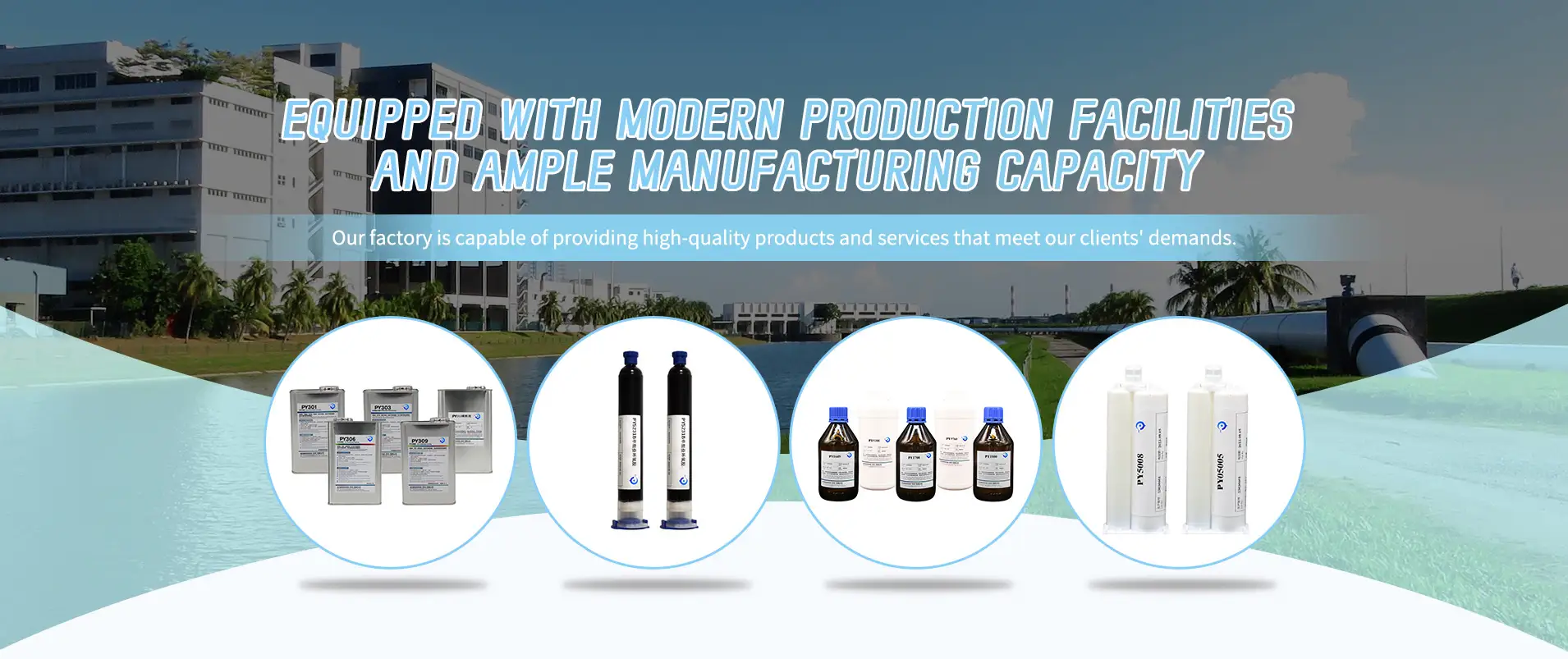In the modern manufacturing landscape, the importance of high-performance bonding materials cannot be overstated. From automotive assembly lines to aerospace components, consumer electronics to construction systems, industrial adhesive plays a pivotal role in joining materials, enhancing structural integrity, and improving overall production efficiency. These advanced adhesives offer manufacturers a reliable, flexible, and clean alternative to mechanical fasteners, welding, or traditional bonding techniques. This article Peiyang explores the industrial adhesive advantages for specific industrial needs.
What Is an Industrial Adhesive?

An industrial adhesive is a chemically engineered substance used to bond two or more surfaces in manufacturing or assembly processes. Unlike household adhesives, industrial adhesives are formulated for high-strength, long-term applications and are often customized for specific materials, environmental conditions, and load-bearing requirements.
Industrial adhesives are designed to perform under demanding conditions such as high temperatures, humidity, vibration, mechanical stress, and exposure to chemicals or UV radiation. They are used in various industries including automotive, aerospace, electronics, furniture, packaging, construction, and more.
Depending on the formulation and use-case, an industrial adhesive can be based on epoxy, polyurethane, acrylic, silicone, cyanoacrylate, or pressure-sensitive technologies. Each type offers unique physical properties and performance advantages.
Advantages of Using Industrial Adhesive in Manufacturing
Choosing the right industrial adhesive can fundamentally improve a product’s structural integrity, production efficiency, and end-user experience. Compared to traditional fastening methods like welding, riveting, or mechanical clips, industrial adhesives provide superior flexibility in bonding, reduce assembly complexity, and unlock new possibilities in product design. Below are the key advantages of using industrial adhesive solutions in manufacturing:
1. Enhanced Structural Performance
High-performance industrial adhesive formulations deliver excellent bonding strength, often surpassing the cohesive strength of the substrates being joined. Unlike point-load connections created by bolts or welds, adhesives distribute loads uniformly across the entire bonded surface. This reduces stress concentration and minimizes the chances of material fatigue or structural failure under dynamic or static loads.
Moreover, industrial adhesive eliminates the need for perforations or weld seams, preserving the structural integrity of the base materials. In demanding sectors such as aerospace, automotive, and defense, where every gram of strength matters, industrial adhesive provides a seamless way to enhance component durability while maintaining optimal weight.
2. Design Flexibility
One of the most compelling advantages of industrial adhesive is its ability to bond dissimilar materials—such as aluminum to glass, plastic to composite, or metal to wood—without the need for mechanical reinforcements. This capability gives designers and engineers much greater freedom in material selection, surface geometries, and product aesthetics.
For instance, in consumer electronics or automotive interiors, where visual appeal and tactile feel are just as important as structural reliability, industrial adhesive enables concealed bonds that do not interfere with surface finishes. Curved panels, irregular surfaces, or slim bezels can be joined without screws or rivets, making the industrial adhesive an essential enabler of next-generation product design.
3. Weight Reduction
Reducing overall product weight is a top priority in transportation-related industries. Replacing conventional mechanical fasteners with industrial adhesive can eliminate the added mass of screws, bolts, washers, and reinforcement brackets. In automotive and aerospace engineering, this can translate into significant weight savings, contributing to better fuel economy, lower emissions, and improved performance.
Beyond hardware elimination, industrial adhesive allows for the use of lighter, thinner substrates that might otherwise not withstand traditional fastening stresses. By bonding lightweight materials securely, industrial adhesive contributes to achieving stringent weight targets without compromising safety or strength.
4. Vibration and Noise Dampening
Unlike rigid metal fasteners that transmit vibration and sound through hard connections, industrial adhesive inherently absorbs vibration and dampens acoustic resonance. This makes it particularly valuable in applications where product quietness and dynamic stability are important—such as electric vehicles, home appliances, drones, and precision machinery.
In automotive manufacturing, for example, using industrial adhesive in body panels and trim helps reduce road noise, rattles, and cabin vibration. Similarly, in electronic products, adhesives minimize noise propagation between components, improving both user comfort and device longevity. The dampening effect also contributes to better fatigue resistance in cyclic loading environments.
5. Time and Cost Efficiency
Modern industrial adhesive technologies are designed for high-speed application, compatibility with automated dispensing systems, and fast curing under controlled conditions (e.g., heat, UV, or ambient temperature). This reduces assembly time significantly compared to processes like welding or riveting, which require surface preparation, mechanical alignment, and post-processing.
In high-volume production environments, industrial adhesive supports lean manufacturing practices by eliminating bottlenecks, reducing rework, and simplifying quality control. Additionally, the absence of drill holes, weld splatter, or bolt torque checks cuts down on inspection and finishing labor, further improving the cost-effectiveness of the assembly process.
6. Aesthetic Improvement
For consumer-facing products, clean visual lines and sleek surface finishes are essential. Industrial adhesive allows for invisible joints that do not interrupt the product’s exterior appearance. Without the need for visible screws, weld seams, or mechanical brackets, final assemblies have a refined look and feel, aligning with modern design trends across automotive, electronics, and furniture applications.
In architectural panels, glass façades, or signage, using industrial adhesive provides structural support while maintaining minimalistic and elegant appearances. This aesthetic advantage also reduces the need for cosmetic repairs, sanding, or painting, contributing to a more efficient production process and higher perceived product quality.
In a competitive industrial environment, efficiency, reliability, and performance are non-negotiable. The role of industrial adhesive in achieving these objectives is more vital than ever. From bonding lightweight composites in aircraft to sealing electronic components from moisture, adhesives deliver unmatched versatility and value. As technology evolves and product complexity increases, industrial adhesive will continue to be the silent enabler of smarter, stronger, and lighter assemblies. By choosing the right adhesive formulation—and applying it with precision—manufacturers unlock the full potential of their materials and processes.
https://www.opticaladhesives.com/Adhesive
www.opticaladhesives.com
Suzhou PeiYang New Material Technology Co. Ltd
